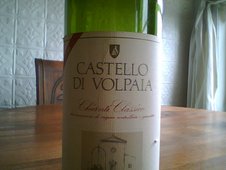
I love Tommy Rowles, the bartender at Bemelmans Bar on the Upper East Side. With 51 years of experience, he a living repository of New York drinking history. But I can't fathom his seeming lack of interest in what he does or makes. Half a century making mixed drinks, serving the elite and at one celebrated moment working alongside Audrey Saunders, and he still things Heineken is a good thing to drink and that a good Martini has no vermouth in it. I guess it's a simple case of a old dog having learned his tricks long ago, when Martinis were preferred super dry and Heineken was an exotic foreign beer.
Anyway, at least he's honest and free of pretense. Here's an interview with him in today's New York Times:
Drinks for Truman, a Beatle and the Next Guy In
It was the year the Brooklyn Dodgers split for Los Angeles. The year “Gigi” swept the Oscars. The year American Express introduced its charge card. The year the young Dubliner Tommy Rowles went wandering into Bemelmans Bar, looking for a bathroom and ending up behind the bar. Fifty-one years later, Mr. Rowles, 69, is still at it, pouring drinks at the chic Madison Avenue boîte in the Carlyle, under the New York whimsicalities of Ludwig Bemelmans, the artist who created Madeline. Mr. Rowles drives in daily from Pearl River across the Hudson. His shift: 11 a.m to 6 p.m.
Who comes into a bar at 11 o’clock? Oh, this is the Carlyle. We don’t talk about our guests.
Favorite libation: All I drink is Heineken.
Easiest drink to make: A martini. Just don’t use vermouth.
The road to the bar exam: I came here in ’58, with $80, from Dublin. I was 18. I left school at 14. My dad died when I was 2, my mom cleaned houses. She was educated. She taught English literature, but they paid her more to clean houses than to teach. In The Irish Echo I found a room for rent on Madison and 96th. I was looking for a job in an Irish bar, but I walked down Madison. There were no bars on Madison. I had to go to the bathroom because I had been up late drinking beers. I walked into the Carlyle. A guy said, “What do you want?” I said: “Mind your own business. I want an Irish bar.” We talked. He said, “Do you have black socks and black shoes?” I said, “Who doesn’t have black socks and black shoes?” He said, “Come in tomorrow.”
Most memorable moment. My fourth customer was Harry Truman. He came in and asked me, “Go outside and tell me what you see.” I looked outside and I saw six guys with cameras, four guys with microphones and a reporter with a pad and pen. He said, “If you had to walk 15 blocks with these guys following you, you’d need a drink too.”
Best tip: A wedding party finished and came in here. They drank and gave me $500. I said, “Excuse me, no, this is hundreds.” They said, “It’s O.K.”
Echoes of Camelot: I served Bobby and Teddy, but not Jack. When they know they’re running, they don’t go into bars. Jackie came in. She was not a drinker. She was class.
Happy hours: The friendliest person I ever served was Paul McCartney. And Jack Lemmon. Remember him in “The Apartment”?
Greatest sorrow: My wife, Elizabeth, died on New Year’s, five years after a heart attack and two massive strokes. We married in ’68. We met at the City Center Ballroom. She had a white dress on. I said, “I’m going to marry you.” She said: “In your dreams. In your dreams.” I knew when I met her, but it took me a long time to persuade her. The only way I’d get married again is if she was reincarnated.
Greatest joy: My girl, she’s 37. She’s having a baby. I hope it’s a girl. Girls are great for dads and granddads.
Hobby: [He makes a beer-drinking motion.]
Where you’ll find him at his hobby: Doyler & Dunney’s in New City. You go in there, the bar is good, the service is great, the food is great.
Exercise secrets of a bartender: I’m a walker. If you drink beer, you have to walk. I walk four miles weekdays with a partner.
Most amazing revelation: There’s no recession on the Upper East Side, I can tell you.







